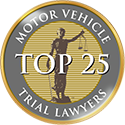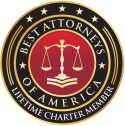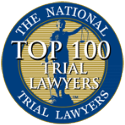No one ever plans to be in a car accident. Because being involved in a car accident in Atlanta is such an unexpected and stressful event, it is important to know in advance what you should do at the scene and afterward to provide your attorney with the best possible evidence in your case.
Hiring an Atlanta car accident attorney and pursuing a successful personal injury claim with an insurance company after an accident requires a lot more than simply filing an insurance claim.
Before an insurance company will write what often is a large check to pay you for your medical bills, lost wages, and pain and suffering, they will conduct an investigation to see if their insured actually caused the accident and if the injuries you are reporting were actually caused by the accident.
Proving these facts to the insurance requires evidence, and the more evidence you can give your attorney to provide to the insurance company, the better your chances are of obtaining full and fair compensation for your case.
Often under the stress and surprise of such a traumatic event as a car accident, people are unable to step back and think about what to do and what evidence might be important to gather right there at the scene of the accident.
To try to make it simpler, we have provided an 11 step printable car accident checklist so you know what to do after a crash.
11 Steps to Take After A Car Accident in Georgia
- STEP 1: Call 911 to report the accident and obtain police and emergency medical assistance.
- STEP 2: Check for any injuries in your vehicle or the other vehicle and help anyone in need of assistance.
- STEP 3: Other than checking for injuries, do not make any statements to the other driver about the facts of the accident. If they say anything to you, write down what they said as soon as possible.
- STEP 4: Identify any eyewitnesses to the accident who may have stopped. Ask them about what they saw and get their name, address, phone number, and email address if possible.
- STEP 5: Take photographs of all cars involved from every angle.
- STEP 6: Take photographs of the scene to show weather and lighting conditions and the roadway.
- STEP 7: Take photographs of any cuts, scrapes, bruises or other injuries suffered in the accident.
- STEP 8: Exchange drivers licenses and insurance cards with the other driver(s) and write down all of their information.
- STEP 9: Obtain the name, address, and phone number of any passengers in the other vehicle(s) if possible.
- STEP 10: Do not tell the police officer you are “fine” unless you really are. Explain the facts about what happened and any injuries you sustained to the police officer in detail.
- STEP 11: See a doctor as soon as possible for any injuries you sustained even if you think you are okay. It never hurts to get checked out even if you don’t want to go by ambulance to the Emergency Room. Follow up with your own doctor or seek treatment at the ER or an Urgent Care facility right away.
This is not a one size fits all checklist, but it provides a good general overview of what to do at the scene of a car accident in Atlanta.
By following those steps or having a friend or family member follow those steps for you at the scene, you will have gathered a lot of helpful evidence to assist your car accident attorney in preparing the best possible personal injury case for you.
To better help you understand why each piece of evidence you are collecting is important, let’s break them down step by step:
Step 1: Call 911 to Ask For Medical Assistance and Obtain A Car Accident Police Report
This step is critical for many reasons. The first priority at any accident is tending to anyone who is injured, and the best way to do that is to call for an ambulance and trained emergency medical personnel.
What about minor accidents? Do you have to call the police after a minor accident? Yes. The 911 dispatcher will also send a police officer to the scene who will generate an accident report and usually issue a citation to the at-fault driver.
The accident report is critical to your case because it will contain all of the drivers’ and passengers’ names and information as well as the drivers’ insurance information.
Plus, it will include a diagram of how the accident occurred and document important factors such as time, date, lighting, weather, and traffic conditions at the time of the accident.
It is very difficult to pursue a car accident insurance claim if the crash was not reported to the police and for which no accident report exists.
Step 2: Check For Car Accident Injuries
Again, the first priority after the accident is identifying and helping anyone who is injured.
This is more of common sense and humanitarian step than anything having to do with evidence collection.
However, as further discussed below you do want to document any car accident injuries to whatever extent possible.
Step 3: Don’t Discuss the Car Accident With Other Parties At the Scene
This step may seem strange because our inclination as humans after an accident is to want to explain what happened or find out what happened.
If the accident is clearly the other driver’s fault and not yours (i.e., you were sitting completely stopped and they rear ended you) then it is generally okay to ask them why they hit you to see if they will make an incriminating admission of fault.
However, in Georgia accidents where liability (fault) may be up for debate, anything you say or ask can become twisted over time and later used against you by the other driver and their insurance company and attorneys.
It is just as important to not provide evidence harmful to yourself as it is to gather evidence helpful to your case. So it is better to simply not say anything at all after checking to make sure the other driver and passengers are not seriously injured.
Wait for the police to arrive and make your statements only to the police officer as discussed further below.
To aid your memory, if the other driver says anything to you about the cause of the accident write down what they said as soon as possible so you can remember it more accurately later.
Step 4: Ask Witnesses For Their Contact Information
Neutral eyewitnesses can provide some of the most critical evidence available in a car accident case. Often the parties involved in the accident either don’t know exactly how the accident occurred because it was so unexpected or their version is skewed to try to minimize their own fault in the accident.
Thus, police officers and insurance adjusters treat the statements of the parties to the accident with some skepticism.
However, when one party’s version of events is supported by one or more neutral eyewitnesses then that party’s statement becomes far more believable both to a police officer and insurance adjuster as well as to a judge and jury if you wind up involved in a lawsuit.
Eyewitnesses will often only stop long enough to make sure everyone is okay and will leave the scene before the police arrive.
It is critical to try to identify any eyewitnesses early on and ask them what they saw. Write down what they tell you and all of their contact information including name, address, phone number, and email address if they will provide it to you.
If they say they do not want to be involved in any court case try to impress upon them the importance their statement could have in obtaining justice for those injured in the accident.
Eyewitness testimony is some of the most critical evidence that is lost if not obtained right at the scene of the accident, and in cases of disputed liability (fault), it can make or break your case.
Steps 5-7: Take Photographs of the Car Accident Scene
It’s an old expression, but a picture truly is worth a thousand words. No attorney can ever explain to an insurance adjuster or a jury how serious an accident was as well as photographs of the damaged vehicles can.
While it is usually possible to obtain photographs of the damaged vehicles after they have been towed to a wrecker yard and it is usually a good idea to follow up and do so, those photographs are not quite as powerful or as helpful as photographs from the scene of the accident depicting how the cars looked at that time.
Additionally, photographs of the scene to show the exact lighting, traffic, and weather conditions can only be taken at the time of the accident. There is no true substitute for a picture showing the exact conditions at the day and time of the accident.
You or your attorney can return to the scene at a later date and try to take representative pictures at the same time of day and location, but those pictures are just that – a representation – and not an actual depiction of the conditions of the scene at the time of the accident.
Photographs of injuries are the same. Once medical personnel begins treating injuries they never quite look the same again. It may seem awkward but is very helpful to take photographs of fresh injuries at the time.
If an injury involves bruising, it is a good idea to take daily photos of the progression of the bruise. Bruising is usually much easier to see and looks much worse two or three days after an accident.
Thus, you would want take photos of the bruising at the scene and follow up with additional photos in the days following the accident to show the full extent of the injury.
Again, medical records can document injuries, but nothing truly demonstrates the extent of an injury or the pain and suffering resulting from an injury like a photograph will.
The more photographs you take after an accident, the better. Take photos from every possible angle because you never know what might become critical to have a clear picture of down the road.
Steps 8-9: Exchange Information With Other Drivers and Passengers Involved in the Accident
These steps are some of the most straightforward and widely known steps to take after an accident. Georgia law requires you to exchange license and insurance information with the other driver after most accidents anyway, but you will need that information to pursue a claim with the other driver’s insurance.
If a police officer is called to the scene, the police officer should obtain all of this information for their report, but it never hurts to ask for it all yourself anyway just in case the officer omits something.
Step 10: Discuss the Accident With the Police Officer Who Arrives At the Scene
Typically after a car accident, you will want to explain the facts of the accident from your perspective to the investigating police officer. However, I should provide a caveat here.
For evidence purposes, it is important to remember that traffic accidents almost always involve a violation of a traffic law, which is technically a criminal offense in Georgia.
So when you speak to a police officer about the accident, keep in mind that anything you say can be used against you and can aid the officer in bringing a traffic charge against you.
Generally, though, you will want to explain to the officer the facts of what caused the accident to make sure they get their accident report and liability determination correct. Provide as much detail as you can to make sure the officer gets it right in his report.
If you believe you may have suffered injuries, even if you are not sure, tell the officer that you think you may be injured.
If you do not, then he will write in his report that you were not injured, and the insurance company can use that against you in handling your claim if you later discover that you are more injured than you first thought.
They can try to argue that because you reported being uninjured at the scene of the accident, the injuries you are now making a claim for arose after the accident and were not caused by the accident.
While insurance companies know it is common for people injured in a car accident to not notice all of their injuries or the extent of their injuries for days or sometimes even weeks or months after the accident, nevertheless if you tell the officer you are uninjured you will likely encounter at least some resistance from the insurance company when you later report injuries from the accident.
Following this step and not telling the police officer, as a matter of fact, you are not injured when you really can’t be sure yet helps eliminate that resistance from the insurance company. Which leads us to our last step…
Step 11: Seek Medical Treatment For Your Car Accident Injuries
Many people involved in car accidents who are not seriously injured understandably decline treatment at the scene. Nobody wants to take an ambulance ride or spend hours in the Emergency Room if you think you can avoid it. However, in a personal injury case the sooner you begin treatment the better. Thus, it is always advisable to get checked by a physician as soon as possible after being in an accident. If you do not want to be or feel you do not need to be transported by ambulance, drive yourself or have a friend or family member drive you to your own primary care doctor or an Urgent Care facility.
Tell your doctor everywhere you are feeling any pain or symptoms no matter how minor it may seem. Often injuries to the discs of your neck and back may not manifest right away, but if you are feeling any pain, stiffness, or soreness in those areas it is important to tell your doctor that from the beginning.
If any of your injuries turn out to be more serious than just bruising, stiffness, and soreness, the insurance company will look at your medical records to see when you first started complaining of the injury to see if they have an argument that it was not caused by the accident and is not their responsibility to pay for.
If you reported even a minor ache in that area in your first visit to your doctor the day of the accident then it is much easier to demonstrate to the insurance company in the medical records how that ache was the initial sign of a more serious injury caused by the car accident.
If there is a delay in reporting that injury or seeking medical treatment for that injury, however, then the insurance company has a better argument that the injury could have been caused by something other than the car accident, and as a result you may not be able to get maximum value for your case.
The Importance of Knowing What to Do After A Car Accident
Even though after an accident you will have a million things on your mind, following these steps is critically important to obtaining the justice and full compensation you are entitled to once the aftermath of the accident has settled down.
It is important to remember that a traffic accident involves a violation of both criminal and civil law. Like any violation of law, it takes evidence to prove what happened.
If you want to be fully compensated for every injury you sustained in the accident, the more evidence you gather right after the accident the more tools your car accident attorney will have to prove that the incident was not your fault and that the injuries you sustained were caused only by the accident and not by something else.













